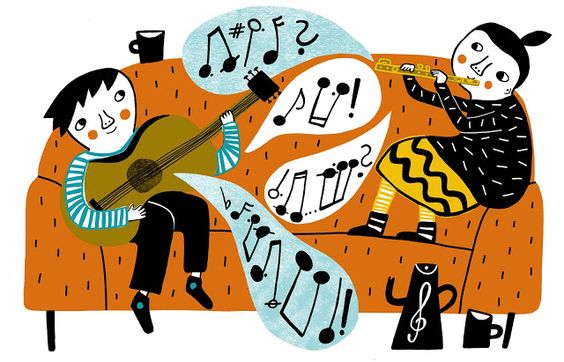Folk music helps us understand our own cultures
Although traditional folk music is not heard much on the radio, it holds deep significance to a culture’s people.
What makes music “folk?” How does a country’s history influence its rhythms? While well-known folk artists like Joni Mitchell and Bob Dylan play into the genre’s acoustic sounds and meaningful stories, folk music is more than just deep lyrics and upbeat guitar.
While modern folk is heavily influenced by blues and country music, its roots come from oral traditions that are centuries old. Folk songs are not written by a single artist. Instead, stories performed orally are passed on by generations, and their sounds establish the genre’s shape. From its use of storytelling to its acoustic instruments and choral chants, folk inspired the natural, live band sounds used in popular music today.
As folk music exists in different cultures, I can only speak of the music that I grew up with. Polish folk songs have shaped the way that I communicate with the families and friends of my community. Its traditional instruments—violins, accordions, pianos, and guitars—are incompatible to the contemporary folk songs that you’ll find playing in Toronto cafés.
The lyrics in Polish folk speak of the country and its people. Songs like “Szła Dzieweczka do Laseczka” (“Went a Girl Through the Forest”) and “Hej, Sokoły” (“Hey, Falcons”), boast about the forests and mountains that surround Poland. They also touch on the patriotic and almost medieval love held between Poles—a symbol that frames Poland’s history and its journey to independence in 1919. While these tunes are far from contemporary, they still tug on the heartstrings of the country’s people today. Sometimes, traditional Polish weddings will incorporate remixed versions of these songs on the dance floor for the simple fact that everyone will know them.
Today, it is nearly impossible to create a song that unites listeners of all cultures. The beauty of cultural folk music is the unison it creates, something that you cannot always find on the radio.
When I think of North American folk music, artists like Odetta and La Bolduc come to mind. While these female singers grew to fame in the early 1930s and late 1950s, the music they left behind share their perspective of North America through drastically different cultural lenses. Odetta’s African-American roots graced her listeners with lyrical calls for civil rights movements. On the contrary, La Bolduc’s French-Canadian tunes offered a perspective that encouraged the preservation of the French language in Canada. While both artists come from opposite ends of the continent, their songs have become a retelling of the complex history of North America.
It can become difficult to identify music as “folk.” Apple Music and Spotify tend to label traditional folk tunes as “blues” or “indie” as these genres often overlap in sound. Next time you listen to a song that you believe to be “folk,” ask yourself: “does this music teach me anything about a culture’s people?” If yes, the roots of a genre centuries old are still alive.

